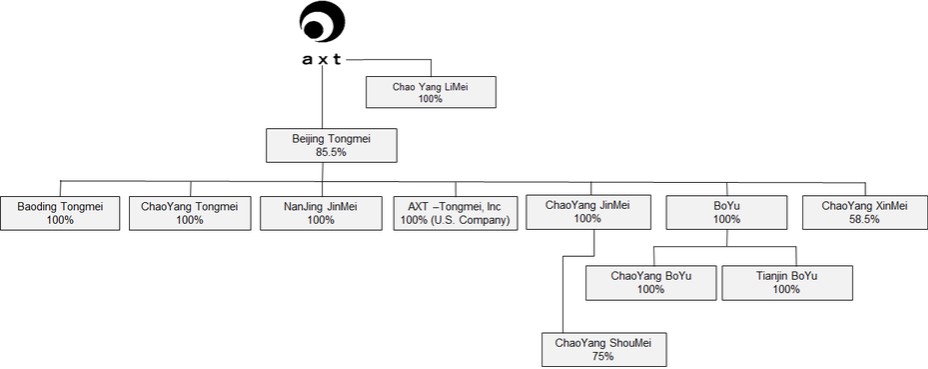2020, Investors, which consist of 10 private equity funds, had entered into two sets of definitive transaction documents, each consisting of a capital increase agreement along with certain supplemental agreements in substantially the same form (collectively, the “Capital Investment Agreements”), with Tongmei for a total investment of approximately $48.1 million. The currency used in the investment transactions was the Chinese renminbi, which has been converted to approximate U.S. dollars for this Quarterly Report on Form 10-Q. The remaining investment of approximately $1.5 million of new capital was funded in January 2021. The government approved the approximately $49 million investment in its entirety on January 25, 2021. In exchange for an investment of approximately $49 million, the Investors received a 7.28% redeemable noncontrolling interest in Tongmei.
Pursuant to the Capital Investment Agreements with the Investors, each Investor has the right to require AXT to redeem any or all Tongmei shares held by such Investor at the original purchase price paid by such Investor, without interest, in the event the IPO fails to pass the audit of the Shanghai Stock Exchange, is not approved by the Chinese Securities Regulatory Commission (“CSRC”) or Tongmei cancels the IPO application. The aggregate redemption amount is approximately $49 million, subject to the foreign exchange rate variable at time of redemption.
Tongmei submitted its IPO application to the Shanghai Stock Exchange in December 2021 and it was formally accepted for review on January 10, 2022. The Shanghai Stock Exchange approved the IPO application on July 12, 2022. On August 1, 2022, the CSRC accepted for review Tongmei’s IPO application. The STAR Market IPO remains subject to review and approval by the CSRC and other authorities. The process of going public on the STAR Market includes several periods of review and, therefore, is a lengthy process. Subject to review and approval by the CSRC and other authorities, Tongmei hopes to accomplish this goal in the coming months. The listing of Tongmei on the STAR Market will not change the status of AXT as a U.S. public company.
An early step in the STAR Market IPO process involved certain entity reorganizations and alignment of assets under Tongmei. In this regard our two consolidated raw material companies, Nanjing JinMei Gallium Co., Ltd. (“JinMei”) and Beijing BoYu Semiconductor Vessel Craftwork Technology Co., Ltd. (“BoYu”) and their subsidiaries were assigned to Tongmei in December 2020. As of June 30, 2021, AXT-Tongmei, Inc., a wholly owned subsidiary of AXT, was assigned to Tongmei. The assignment to Tongmei of JinMei, BoYu and their subsidiaries, and AXT-Tongmei, Inc. increased the number of customers and employees attributable to Tongmei as well as increased Tongmei’s consolidated revenue.
We are neither a PRC operating company nor do we conduct our operations in China through the use of variable interest entities (“VIEs”). Recent statements and regulatory actions by China’s government on the use of VIEs and data security or anti-monopoly concerns have not impacted our ability to conduct our business or continue to list our common stock on the Nasdaq Global Select Market.
The following organization chart depicts the consolidated structure as of June 30, 2024;

38